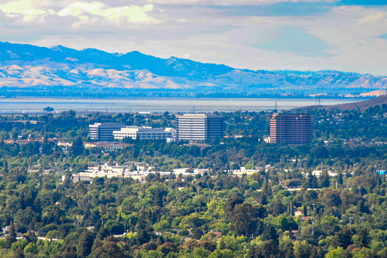 Approximately 13% of the U.S. population is classified as an immigrant – an interesting statistic, considering that the U.S. is a nation built off a foundation of immigration. With the exception of Native Americans, the overwhelming majority of Americans trace their roots to foreign countries from which their ancestors, immediate family, or they themselves were born.
Approximately 13% of the U.S. population is classified as an immigrant – an interesting statistic, considering that the U.S. is a nation built off a foundation of immigration. With the exception of Native Americans, the overwhelming majority of Americans trace their roots to foreign countries from which their ancestors, immediate family, or they themselves were born.
According to the population clock on the official government census website, the U.S. consists of more than 328 million people. Within that, approximately 43.3 million are foreign-born.
Since 1965, the foreign-born population has more than quadrupled, and by 2065, that number is expected to reach 78 million. In 2015, 67% of eligible individuals obtained citizenship. The median amount of time they’d spent in LPR (lawful permanent resident) status — seven years — clearly displays the extent of the naturalization process.
Defining U.S. Citizenship
As defined by USCIS, or the U.S. Citizenship and Immigration Services, the status of citizen is a show of commitment to the country and a display of loyalty to the Constitution. In return, citizens benefit from certain rights, freedoms, and responsibilities.
Rights encompass freedoms such as the well-known “right to life, liberty, and the pursuit of happiness.” Responsibilities encompass staying informed, respecting and obeying laws, and paying taxes. Amongst others, they all are significant in ensuring the country’s prosperity.
Non-citizen residency
Immigration laws — established rules on entry into and duration of stay within the country — encompass the naturalization process and address unlawful stays and deportation.
The H-1B visa
This visa provides opportunities for both employers and foreign employees. This exists for knowledge workers in certain occupations — usually requiring a bachelor’s degree or relevant work experience. The employer becomes able to employ temporarily — usually for a period of three years, although extendable to six – a foreign worker.
After that period, visa reapplication is possible, as well as an eventual application for lawful permanent residency.
The fiance visa
Also known as a K-1 visa, a foreign-born engaged partner of a U.S. citizen may be allowed to enter the country, so long as marriage takes place within 90 days. Afterward, application for permanent residency is possible.
If the marriage takes place outside the United States, the fiance visa process may be skipped entirely. The spouse may apply for permanent residency without first requiring entrance into the country.
The provisional unlawful presence waiver
Immediate relatives — spouses, children, or parents — of citizens are eligible for this waiver. If they have been residing unlawfully, they must leave the country first for an immigration visa interview before being allowed to return as a lawful permanent resident.
Regardless of the route taken…
…the route to citizenship is often lengthy and complicated. Certainly, it would not hurt to receive assistance from a professional that specializes in immigration legal help. Good immigration lawyers dedicated to representing individuals seeking that help can ease the process significantly.
For those seeking immigration help, it may be difficult to find the best immigration lawyer, since the best fit depends on each individual’s needs and situation. Some measures, however, may be taken as a precaution.
Research potential lawyers
They represent the individual in legal matters regarding stay and status as a resident within the country, so it is extremely important to evaluate their work.
Check associations in which they are members. Read reviews on their past services. View any relevant work with which they’ve been involved. Ensure that they are legitimate lawyers, not simply, “professionals” who claim to be able to assist with immigration matters.
Talk to multiple immigration attorneys
Addressing several professionals offers the opportunity to compare their services, personalities, and mindsets. The best immigration lawyer differs from person to person. Additionally, listening to advice from multiple people offers a broader perspective on the best actions to take.
The Foreseeable Future
U.S. immigration laws — although somewhat difficult to navigate — exist for good reason. Unsurprisingly, many non-citizens, wanting to take steps toward permanent residence, turn to legal immigration help.
The best course of action for immigrants who seek to undergo these processes?
Become informed on the best possible routes to achieving residency and seek out assistance from immigration lawyers to facilitate the process.




